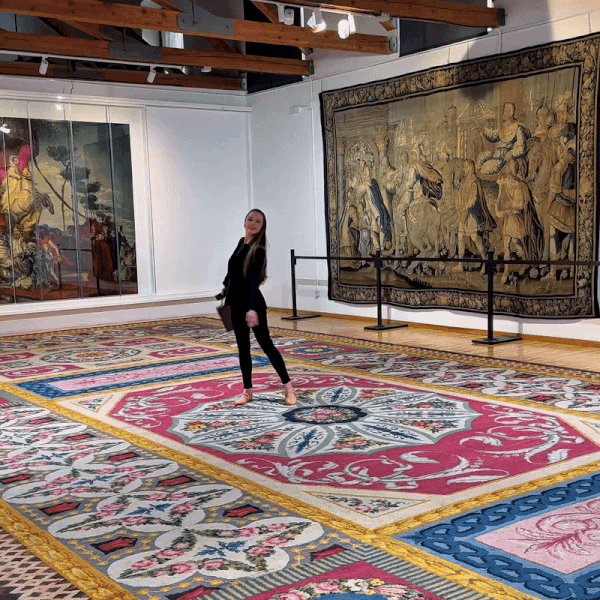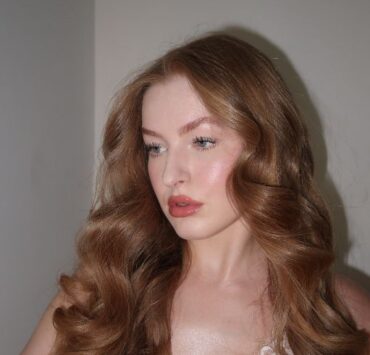Welcome to The Director’s Cut, an interactive column featuring fashion, beauty and career advice from RGNN Director and Founder, @isabelevabohrer.
“Have you even eaten yet?” asked Alejandro Klecker de Elizalde. As Director of Spain’s 300-year-old Royal Tapestry Factory (RFT) since 2015, he has been making significant strides in establishing the RFT as a leading force in the country’s artisanal landscape. In between packed meetings with international embassies and institutions, which frequently count on the RFT for their ornate decorations (as do famous North American film directors – but more on that later!), he had kindly come out to say hola. We had arrived almost four hours before, for a private viewing that I thought would take at most an hour. How wrong I was. “Here, take these catalogues home with you,” he said generously, handing me a weighty bag, also including an essay on the RFT’s 300-year history that he himself had penned.
The RFT is open to the public by appointment only and when we had arrived, there were several citizens ringing the doorbell, some in Spanish and some in English, asking if they could tour the premises without a reservation. No – and I can understand why. The current temporary exhibition in the entrance hall and adjacent galleries is dedicated to Japanese artist Mako Artigas, who designed for brands such as Paco Rabanne, Nina Ricci, Courrèges, Dior and Kenzo, amongst others. Fancy some peppers? Because those were my favorite of Mako’s designs exhibited there.
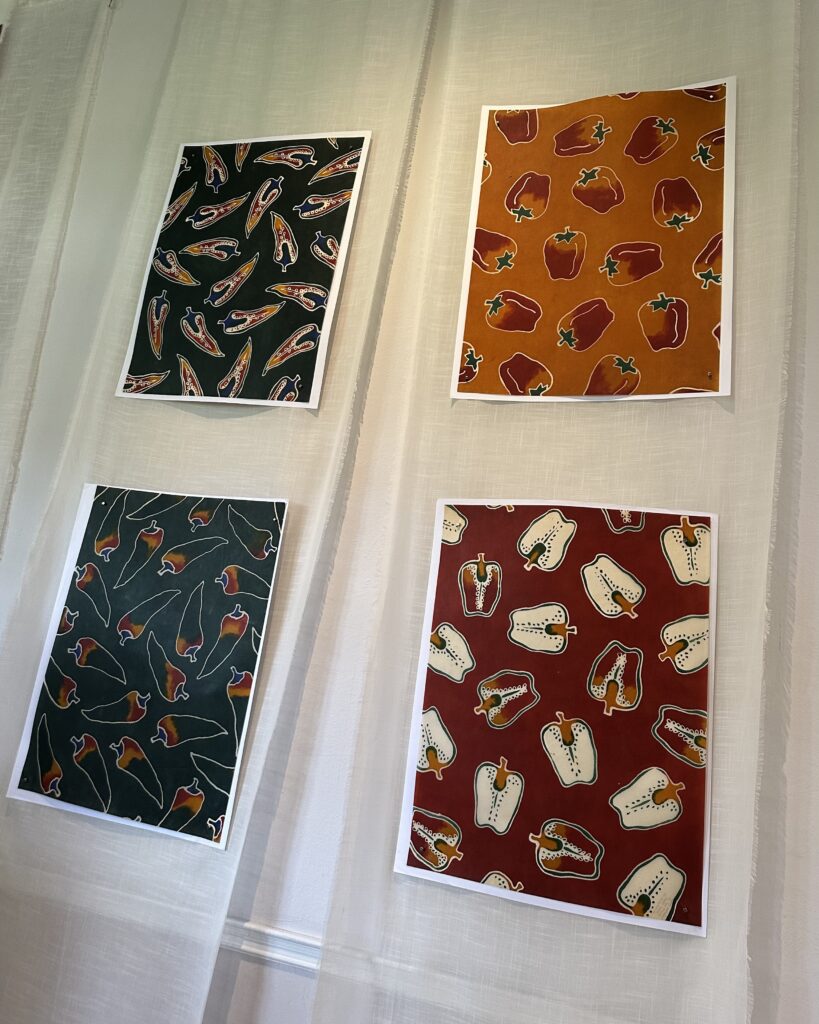
María Eugenia Ramiro, the RFT’s Marketing Director, came out to greet us warmly. She moved aside a wool-decorated, wooden barricade and we headed up an almost-azure azulejo-adorned staircase to the attic, where they store precisely the wool. Don’t know what you’re looking for in the color-coordinated rainbow maze? There’s a map at the entrance, along with a book of samples, which is also what every client receives when they order a tapestry, rug or coat of arms, literally the three arms that the RFT specializes in. As you head back down, you can spot the artisans working on the latter two.
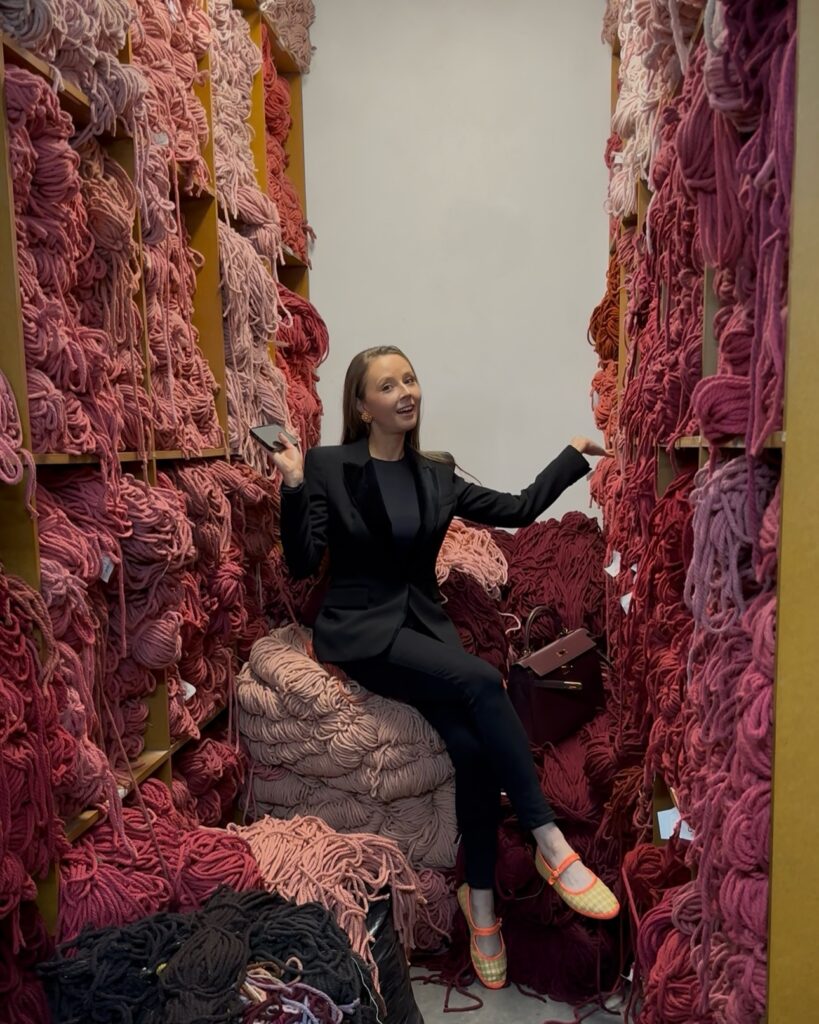
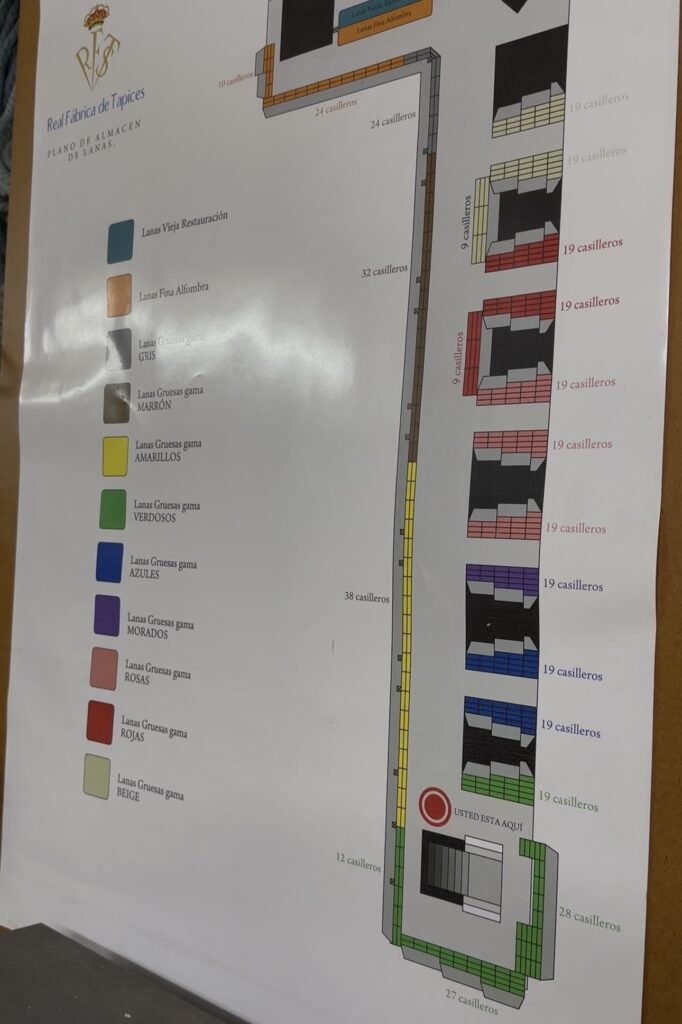
In fact, it is these two, the tapestry and rug making, that a general visitor will get to see first-hand when booking a spot. VIP tours transcend and also get to see the historical archive and restoration – keep reading for details on that below. In either tour, you will see that the work of the artisans is so underrated.
Take Arturo, for example; he demonstrated how a tapestry looks like from the front. A beauty in itself. But he, the artisan, sits behind the tapestry. And behind him, is a print of the drawing. Then, in his head, he maps out the drawing and starts weaving. Only with the help of a comparatively miniscule mirror to see how everything is going. I was afraid to even touch all the bobbins hanging on his work in progress – they aren’t cut off until the tapestry is finished and ready to hang on the wall.
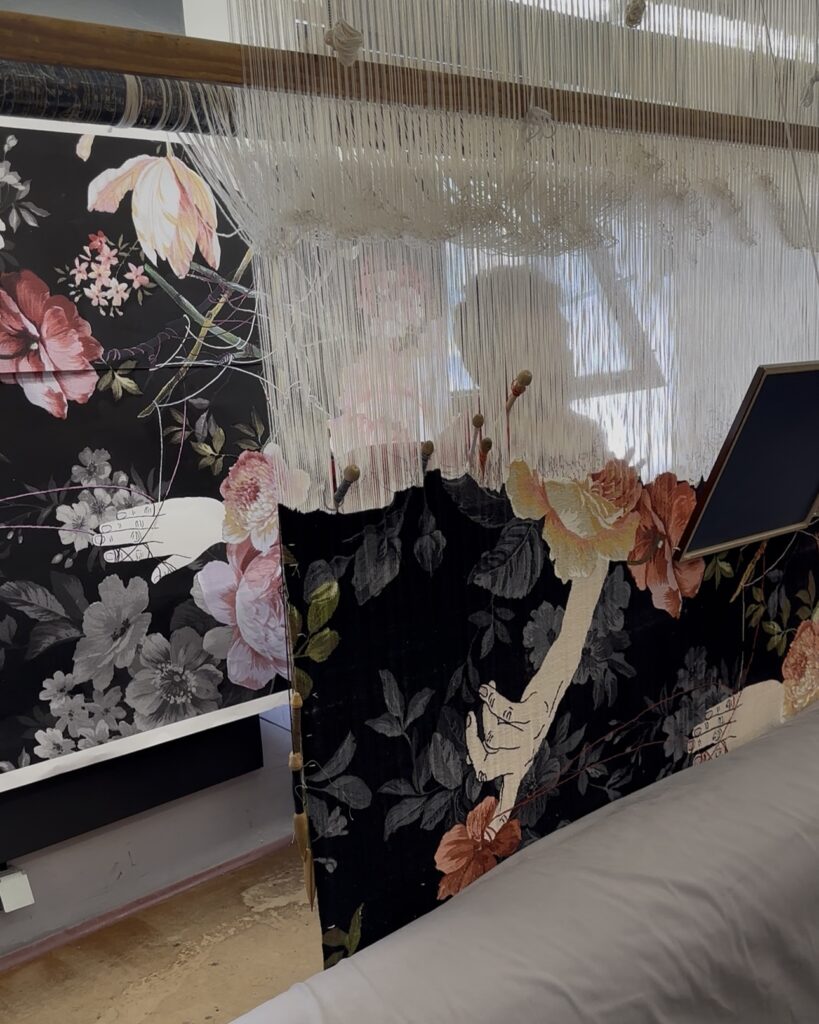
I asked Marta, one of the other artisans, if I could wind a bobbin. It took a while to get the hang of it, and I thought I did pretty well, but when I asked her if she could now use my bobbin for her tapestry, she said, no, only for demonstrations… oh well, at least I tried. The hands-on moments like these were many – did you know that, when it comes to rug making, Spanish knots are more sophisticated than Turkish knots? The RFT does both, and when you touch the rugs, you’ll fathom first-hand how a Spanish knot leaves the rug with a finer weave than a Turkish knot.
When I say it’s a science in itself, I am not joking. Ana, who works in the RFT’s lab, uses a microscope to analyze a material before restoring it. It’s also at this point, that some clients have discovered that their mantones de Manila, the quintessential Manila shawls, which they thought to be made of silk, were actually already counterfeit three centuries ago and made of cotton.
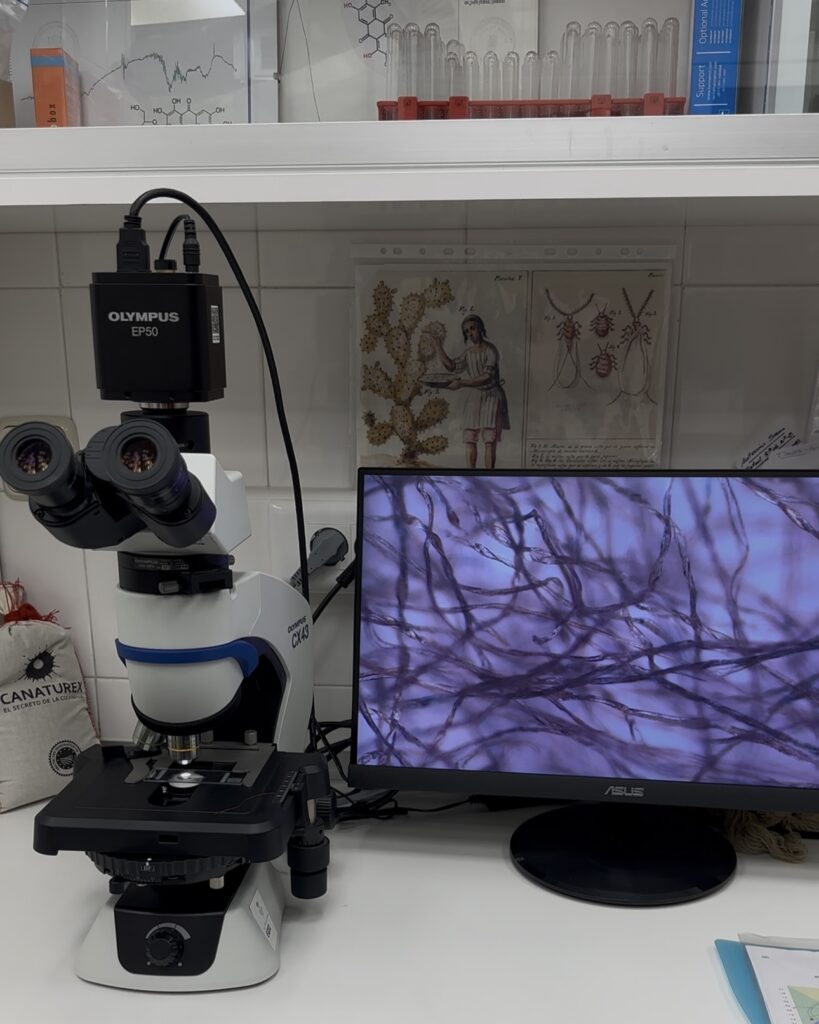
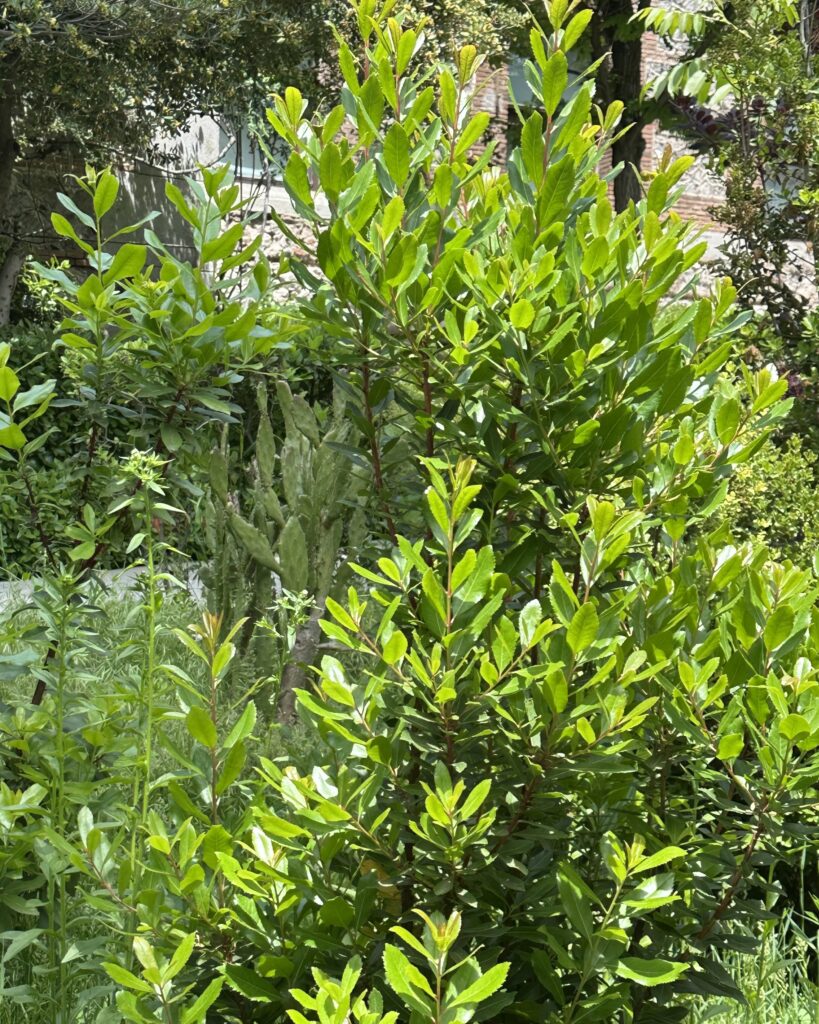
To get back to Ana today, though, she may use a synthetic or plant-based dye, for the latter calling on the RFT’s very own textile garden, which grows plants that can be used as dyes. Just minutes ago, María Eugenia had shown me the nopal, or prickly pear cactus. This is where the cochinelli, or ladybug, nests. The RFT utilizes the dye from dead cochinelli, to find the exact shade of red; they were working on restoring a series of historical Spanish flags right now. Oh, and that’s where curved, surgical needles come in. And for the smaller details, needles that are normally used for eye surgery. Eye-opening, right? My iPhone could hardly capture how minute they were.
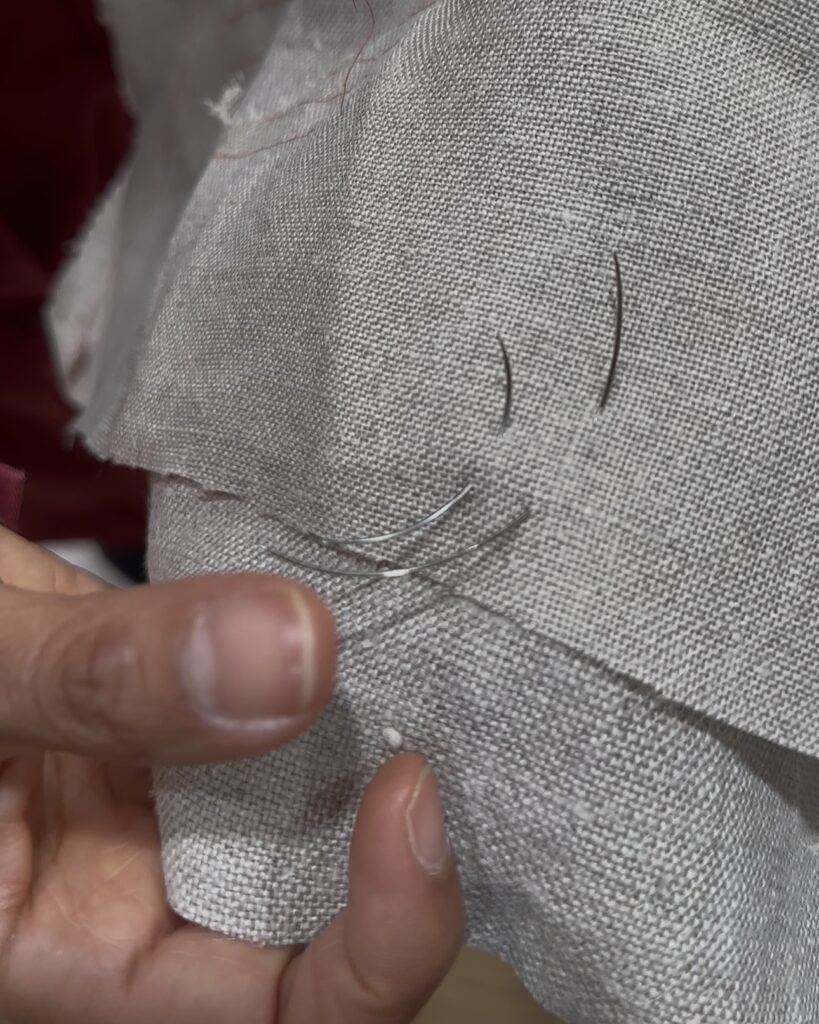
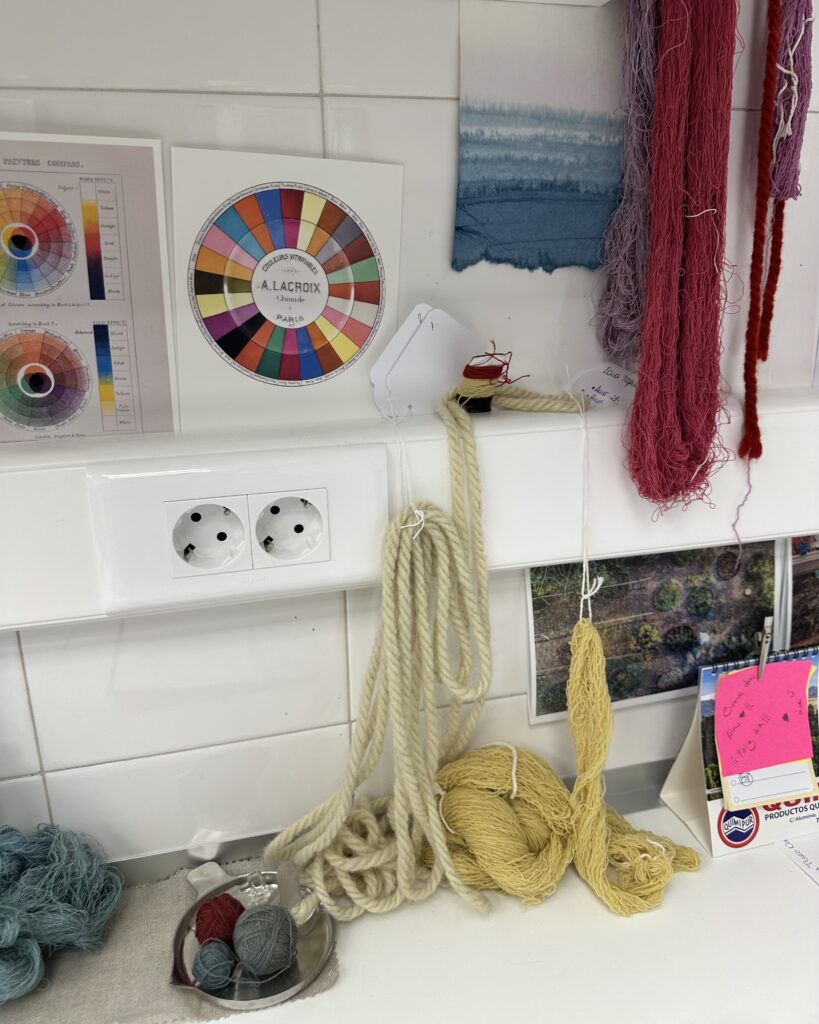
The anecdotes could go on and on – María Eugenia led us to a hard hat area where the rugs are stored and we ducked into the original machine from 1905, with updated security measures from 2018, that removes all the dust before a restoration even starts. (Take a look at the visuals and you’ll understand why they specifically request visitors to wear closed-toe shoes only – and no heels.) Remove the debris and take off the plastic, if only it were that simple. Pure beauty is unveiled when a silk-spooled tapestry is hung up or a finished rug hits the floor. “This one is for a famous North American film director,” said María Eugenia, who had been with us for the entire four hours. “Scorsese?” I inquired. She shrugged loyally, smiling, and remained silent – many clients request to remain confidential. There are lots of North American film directors…
We went to lunch and I subsequently spent the evening reading Alejandro’s essay. Since 1721, more than 300 years, he writes, and the RFT has not once ceased its production. What appears to be a time-old tradition is in reality working with the latest technologies. Just take the 1905 dated duster machine I had so carefully ducked through – the goal is to reuse the dust and wool fragments conventionally cut off and thrown away when a rug is finished. For what? To compact them and reuse them as garden substrates. Perhaps the cochinelli will nest there, I thought, and then it would really tie the knot full circle.
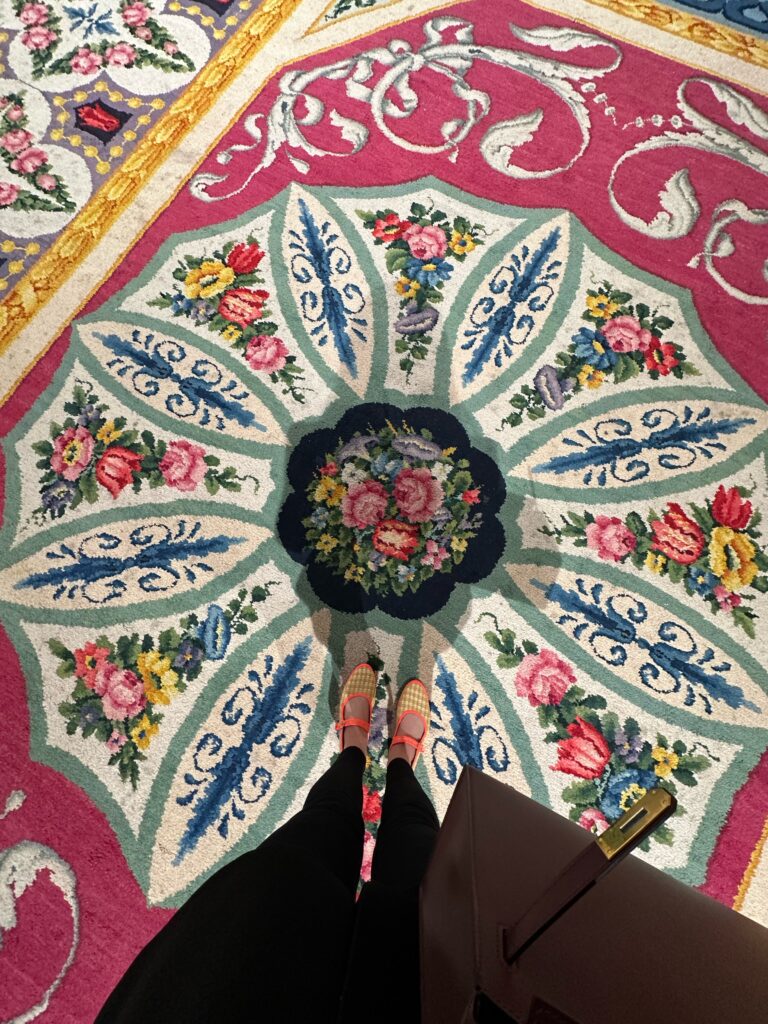
Plan your visit
Royal Tapestry Factory
- Calle de Fuenterabbia 2. 28014 Madrid.
- Visits to the workshops are always guided and by appointment only.
- To make an appointment, send an email to visitasmuseo@realfabricadetapices.com, in which you must provide the names and ID numbers (e.g. passport number) of the attendees.
- Upon receiving said email, the Royal Tapestry Factory will confirm the guided tour according to availability. Possible time slots for tours are as follows:
- Monday to Friday: 10.00 a.m., 11.00 a.m., 12.00 noon and 1.00 p.m.
- Tuesdays, Wednesdays and Thursdays: 4.00 p.m. and 5.00 p.m.
- No afternoon tours from July 1 to September 15.
- Tour duration: 40 minutes.
- Min. 5 people, max. 10 people per group.
- General entry for tours: 6 Euros. Discounted entry: 5 Euros (ID required for the following: unemployed, over 65 years, students and under 18 years old).
- Tour languages: English or Spanish.
- For VIP visits (which in addition to the rug and tapestry making also include access to the historical archives and restoration), please email visitasmuseo@realfabricadetapices.com.
- For services (orders, restoration, etc.), please email informacion@realfabricadetapices.com
- For both visits and services, you can also call +34 91 434 05 50.
- More information on the official website.
Thank you to the Royal Tapestry Factory for inviting us.
Questions or comments? Follow me on IG @isabelevabohrer or TikTok and say hi! See you soon!


